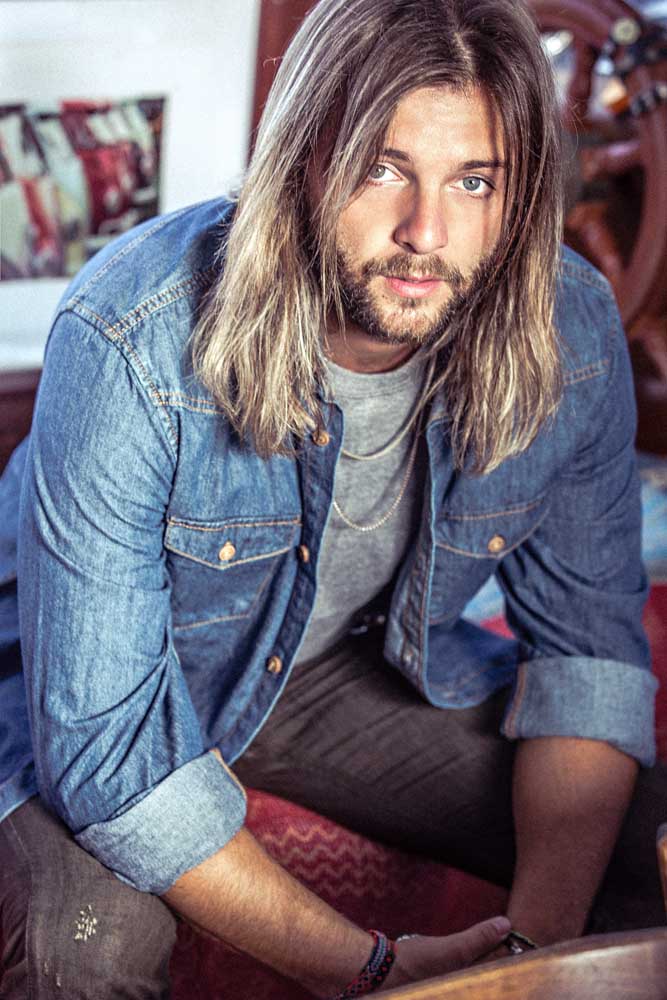Oregon wool in Olympic sweaters
Published 12:00 am Saturday, February 1, 2014

- Bulletin file photoImperial Yarn is made from wool cultivated at Imperial Stock Ranch. A growing number of American clothing designers are finding their way to the brand.
When the opening ceremony gets underway Friday for the 2014 Winter Olympics, viewers around the world will see U.S. athletes wearing sweater uniforms made in the U.S., from wool provided by a north Central Oregon ranch.
The call came on a beautiful summer day in July 2012, when Dan and Jeanne Carver were outside working on Imperial Stock Ranch. The 32,000-acre ranch in Shaniko, northeast of Madras, was founded in 1871. Today, using sustainable practices, the Carvers continue the traditions of raising sheep and cattle and tending to the hay and grains that grow there.
“We came in the house for lunch, and there were 15 phone messages on the phone, and they were all about yarn,” said Jeanne, recalling the first of what would be many calls from a product developer at Polo Ralph Lauren, the famed clothing company.
She’d assumed all the messages were from yarn stores calling about Imperial Yarn, the company the Carvers started in 2000 after the offshore movement of the clothing industry left them with wool, but no buyers. While Dan settled in for a nap, she went outside to return calls.
“One of the messages was from a gentleman. It was an East Coast number,” she said. The man — Carver identifies him only as Robert — would call two more times before she was able to return his call.
When she called Robert back, he began asking questions about yarn.
“I said, ‘Excuse me, but what yarn store are you with?’” Carver said. “He said, ‘I’m not with a yarn store. I’m with product development for Polo Ralph Lauren in New York.’”
He next told Carver he was sitting in an office on Madison Avenue, and she replied that she was sitting outside in the Oregon desert. Carver even held the phone up for about 20 seconds for the man to hear her bleating sheep, she said.
Carver did the same thing for a reporter last week, when an ABC news program featuring an interview with her came on the TV. The former college athlete, and the ranch she runs with her husband, have been suddenly thrust into the limelight thanks to the call from Robert.
“We’re looking for an American yarn, and your brand keeps coming up,” he told her. Carver later learned that the Polo representative had visited a luxury yarn store in New York, where he’d been told of Imperial Stock Ranch and its Imperial Yarn.
“I tracked (the store) down later, and what’s ironic is that they were not our customer, and the owner of the shop said, ‘I’ve been lusting after your yarn for a long time, but I haven’t had the cash flow to bring it in.’ Yarn stores are small businesses like the rest of us, and you sometimes have to wait a long time.”
The night after the call, Carver assembled an information kit with yarn samples and mailed it to New York the next day.
After, “(Robert) was in touch with me every few days, sometimes daily,” asking more questions and for more samples, she said.
On a Thursday in August 2012, Carver learned that a design team from Ralph Lauren would like to visit the ranch the following Tuesday.
Above other possible wool producers Ralph Lauren could have used, “We had made it that far in the sifting, if you will … they were interested enough (in) our story — who we were, our material and our sample yarn — to make an on-site visit,” Carver said.
At this point in their conversations, the Carvers still didn’t know the nature of the project.
“We just hosted a design team for a special project. That’s all we knew,” she said. “We entertained the designers on the knitwear for what ultimately became the Olympic Apparel Project for Ralph Lauren.
Over the months that followed, Carver’s Imperial Yarn would work on meeting the Ralph Lauren designers’ color and gauge specifications.
By December 2012, “we got a production order for this project. A very significant order. But we still did not know what it was for,” she said.
Finally, in early 2013, the Carvers learned the nature of the project. “And of course we had a confidentiality agreement,” Carver said. “My focus was on delivering a quality product.”
American clothing designers had been showing interest in Imperial Yarn even before the call from Ralph Lauren that summer day.
“They were finding us the same way Ralph Lauren did,” Carver said. “They were going online, searching for American yarns, and Imperial Yarn and Imperial Stock Ranch were coming up. They were talking about coming home to America to manufacture. It’s wonderful. There’s this growing interest in doing that.”
Now, interest in Imperial wool and yarn is higher than ever. This year, “We have more than a dozen apparel designers we’re working with potentially for production for fall-winter 2014-2015,” Carver said.
“Today, we raise far (fewer) sheep than the ranch historically did, but we still have a viable commercial operation. When you shear the wool and sell it as a commodity, as we did for 130 years, there are no jobs associated with the wool once you harvest it and sell it down the road.
“Today, I have five women on the ranch that work in the Imperial Yarn business in a rural, remote setting. Those are jobs.”
— Reporter: 541-383-0349, djasper@bendbulletin.com
Editor’s note: A photo caption accompanying this story has been corrected. The original version misidentified a rider herding sheep. The Bulletin regrets the error.







